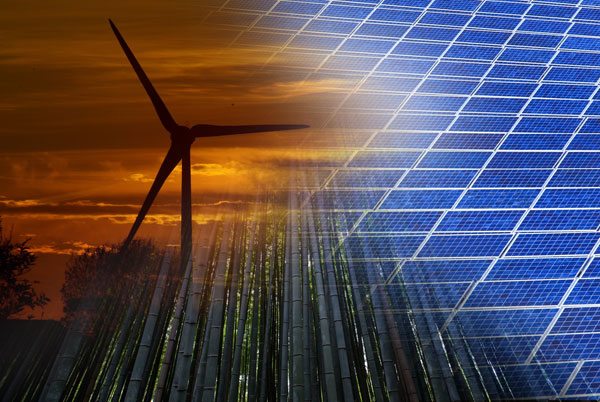
January 3, 2018; InsideClimate News
While last June’s federal withdrawal from the Paris climate accords might have been expected to slow the development of renewable energy, “In many ways, the transformation of the energy economy in a new, green direction continued apace in the United States, just as abroad,” reports Erica Gies for InsideClimate News. One reason, of course, is that over 2,500 cities, states and US businesses themselves signed commitments to meet the Paris carbon emission reduction commitments, offsetting federal recalcitrance. But broader market factors are also at work.
As Gies reports, “The cost of renewable energy keeps going down, comparing favorably with coal. Battery technology also continues to improve and get cheaper. And digital technology is making electric markets cleaner and more efficient, as well.”
For example, with coal, more than half (267 of 522) of all US coal plants have shuttered since 2010. According to the UK-based Carbon Tracker, “The economics of US coal power could not be starker: new coal capacity is not remotely competitive” with gas and renewables.
Of course, gas extracted through hydraulic fracturing or “fracking” has its own liabilities, with babies born near fracking sites about 25 percent more likely to have low birth weight than the norm. A study, which looked at births from 2004 to 2013 in Pennsylvania’s Marcellus region and was published last December in Science Advances, “found evidence for negative health effects of in utero exposure to fracking sites within 3 km. of a mother’s residence, with the largest health impacts seen for in utero exposure within 1 km. of fracking sites. Negative health impacts include a greater incidence of low–birth weight babies as well as significant declines in average birth weight and in several other measures of infant health.”
Still, the growth of much more environmentally friendly solar and wind power is also highly significant. The International Energy Agency (IEA), which, as Gies points out, has consistently underestimated renewable energy growth in the past, notes that, “A common thread…is that costs for key low-carbon technologies—notably solar, wind and batteries—continue to fall.”
Sign up for our free newsletters
Subscribe to NPQ's newsletters to have our top stories delivered directly to your inbox.
By signing up, you agree to our privacy policy and terms of use, and to receive messages from NPQ and our partners.
The latest World Energy Outlook predicts that renewables will capture two-thirds of global investment and generate 40 percent of total power in 2040 “as they become, for many countries, the least-cost source of new generation.” Already, IEA reports that from 2010 to 2016, the cost of photovoltaic solar fell 70 percent, while wind generation’s cost fell 25 percent.
Gies notes that wind and solar emerged mostly unscathed in the recent tax bill, in large measure because, “Republicans buckled under pressure from red states like Texas, where a new wind facility that opened in December pushed the state’s wind capacity past coal.”
Meanwhile, in California, the California’s Public Utilities Commission reported that the state is almost certain to exceed its target of having 33 percent of power come from renewables by 2020 and may meet its 2030 target of 50 percent by 2020 and almost certainly by 2025. California Governor Jerry Brown has advocated a 100-percent-renewable target for 2040.
One major challenge for renewable energy is the need for better batteries to store power that is produced for when it is needed. “It helps,” Gies writes, “that adding storage is now more feasible because battery prices have come down by 40 percent since 2010,” according to the IEA. One idea, Gies adds, is that as electric cars become more common, it may be possible to use their batteries as storage for the grid; in other words, once a car is charged, the unused power in the battery could feed power back to the grid, with the customer being paid for the power provided.
“This is the future of energy,” Gies writes, “and it’s coming much faster than conventional wisdom predicted. […] Altogether, these policies, technologies, and markets are overcoming hurdles to new types of greener energy—solar, wind, storage, efficiency—decreasing greenhouse gas emissions from electricity.”
As many readers will likely remember, InsideClimate News is one of a number of field-specific nonprofit news sites. It broke the story on Exxon’s longstanding knowledge of the effects of fossil fuels on global warming.—Steve Dubb












